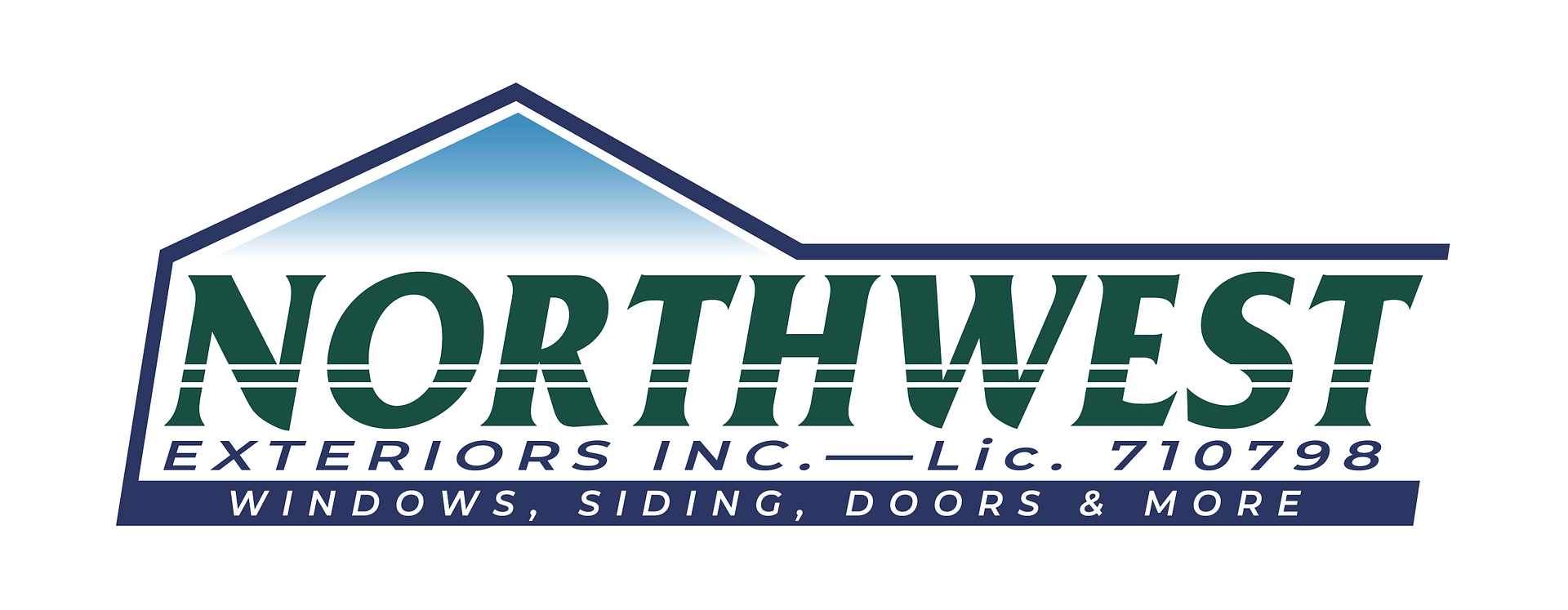
If you own an older home, you may be noticing some signs of age with your windows. As the decades roll on, windows can become less efficient at keeping out cold air and moisture. When this happens, you’ll notice a draftier house that costs much more to keep comfortable. Replacing windows at this time is not only advisable but a great investment. Triple-pane windows can deliver optimal insulation and the low monthly energy bills you’re hoping for.
Are high energy bills or excessive noise disrupting your comfort at home? Triple-pane windows may be the solution you need. This blog post will explore the benefits of Sacramento replacement windows, from their efficiency in energy savings to their impact on home design. Readers will discover how these windows can lead to reduced heating and cooling costs, potential tax credits, and a quieter indoor environment. By the end, you’ll understand how to enhance your home with a Northwest Exteriors profile that aligns with your energy-saving goals.
Understanding Triple-Pane Windows and Their Benefits
Triple-pane windows provide significant advantages over double-pane options, primarily in terms of heat transfer efficiency. Sacramento replacement windows incorporate advanced coatings that enhance energy performance, effectively managing humidity levels and improving overall comfort. They also offer solid long-term financial benefits through energy savings and impressive return on investment. Additionally, this subsection addresses common misconceptions regarding triple-pane window performance and highlights their environmental benefits, including alignment with Energy Star standards.
How Triple-Pane Windows Differ From Double-Pane Alternatives
Triple-pane windows significantly differ from double-pane options in several key areas. While both types offer insulation, triple-pane windows provide enhanced heat retention and reduced mold growth potential due to their superior thermal performance. Additionally, leading window manufacturers, like Pella, produce triple-pane models using polyvinyl chloride frames, which can further improve energy efficiency ratings determined by the National Fenestration Rating Council. Homeowners seeking to optimize energy savings should consider requesting a free estimate to better understand the benefits of upgrading to triple-pane windows.
The Science Behind Energy Efficiency in Triple-Pane Windows
The technology behind triple-pane windows significantly contributes to their energy efficiency. These windows utilize inert gases like argon and krypton between glass panes to reduce heat transfer, making it harder for indoor heat to escape during winter and preventing heat from entering in summer. Moreover, this construction not only bolsters insulation but also offers improved noise reduction, creating a more comfortable living environment while minimizing the impact of greenhouse gas emissions from heating and cooling systems.
Long-Term Financial Benefits of Installing Triple-Pane Windows
Investing in triple-pane windows not only enhances a home’s comfort but also leads to significant long-term financial savings. The advanced insulation properties, aided by inert gas fills between the panes, help reduce energy costs by minimizing heat loss and controlling indoor temperatures, which ultimately decreases the carbon footprint of the household. Furthermore, homeowners benefit from improved soundproofing and reduced condensation, making their living spaces more enjoyable while protecting wood structures from moisture-related issues.
Common Misconceptions About Triple-Pane Window Performance
Many homeowners hold misconceptions about the performance of triple-pane windows, often assuming that they are only beneficial in extreme climates. In reality, these windows are designed to provide energy conservation benefits across various environments, making them a suitable choice for passive house construction. Furthermore, some individuals believe that the additional panes will lead to increased mildew growth; however, the superior insulation properties of triple-pane windows actually help maintain a regulated indoor climate, reducing moisture buildup.
Environmental Advantages of Choosing Triple-Pane Windows
Choosing triple-pane windows offers significant environmental benefits, assisting homeowners in achieving energy efficiency while maintaining comfort in their living spaces. The use of these advanced windows reduces the need for excessive air conditioning, leading to lower energy consumption and utility costs. By optimizing insulation, triple-pane designs help minimize heat transfer through walls, which is crucial for maintaining a stable indoor climate, regardless of the zip code. Additionally, homeowners who opt for styles like bay windows can benefit from both aesthetics and energy savings, making a sustainable choice that aligns with modern home improvement trends.
Evaluating Cost vs. Energy Savings With Triple-Pane Windows
Initial investment and payback period analysis is essential when evaluating the cost-effectiveness of triple-pane windows. Homeowners can also explore tax credits and incentives for energy-efficient upgrades. Comparing utility bills before and after installation provides practical insights into savings. Various factors, including door design and low emissivity coatings, influence energy savings, supported by real-life case studies showcasing these windows’ benefits.
Initial Investment and Payback Period Analysis
When homeowners consider triple-pane windows, the initial investment can seem substantial compared to standard options. However, the long-term advantages of superior thermal insulation and insulated glazing make these windows a worthwhile renovation. Over time, energy savings often offset the upfront costs, particularly when considering lower utility bills and potential tax incentives related to sustainability. Analyzing payback periods reveals how quickly homeowners can recover their investment, ultimately leading to more energy-efficient living spaces.
Tax Credits and Incentives for Energy-Efficient Window Upgrades
Homeowners considering triple-pane windows can take advantage of various tax credits and incentives for energy-efficient upgrades. These financial benefits can significantly reduce the overall project costs, allowing homeowners to maximize their energy savings in the long run. Many programs specifically target improvements that reduce greenhouse gas emissions, such as the installation of vinyl siding, window film, and sliding glass doors, providing a clear path to both financial relief and enhanced home comfort.
Comparing Energy Bills Before and After Installation
Homeowners should compare energy bills before and after installing triple-pane windows to evaluate their energy savings effectively. This analysis can reveal how these energy-efficient windows contribute to lower utility costs due to improved insulation, enabling homeowners to enjoy the benefits of reduced heat loss during winter and heat gain in summer. With the added warranty reassurance that comes with many window installations, combined with practical enhancements like awning designs to block sunlight, homeowners can make sure their investment pays off while protecting their indoor environment from harmful ultraviolet rays and minimizing the impact on their lawn.
Factors Affecting Energy Savings From Triple-Pane Windows
Several factors can influence the energy efficiency of triple-pane windows, affecting potential savings for homeowners. The quality of the window frames, the type of inert gases used between the panes, and low emissivity (Low-E) coatings all play crucial roles in enhancing performance. Proper installation is equally vital, as gaps or leaks can compromise insulation, leading to increased energy costs over time:
Real-Life Case Studies Demonstrating Cost-Effectiveness
Real-life case studies highlight the significant cost-effectiveness of triple-pane windows, demonstrating their impact on energy savings. For instance, a family in Sacramento reported a 40% reduction in their annual heating and cooling costs after upgrading to triple-pane windows. These windows not only enhanced their home’s comfort but also delivered a compelling return on investment, showcasing how choosing energy-efficient options can lead to substantial long-term savings for homeowners.
Installing Triple-Pane Windows for Maximum Efficiency
Selecting a qualified contractor for installing triple-pane windows is crucial for maximizing energy savings. Understanding the installation process and timeline, alongside the importance of proper sealing and insulation techniques, can greatly enhance performance. Best practices for maintaining energy efficiency post-installation also play a vital role. Additionally, coordinating window installation with other home renovations guarantees efficiency and effectiveness in energy conservation efforts.
Selecting a Qualified Contractor for Installation
Selecting a qualified contractor for the installation of triple-pane windows is essential for achieving maximum energy savings. Homeowners should seek professionals with proven experience in window installations, particularly those specializing in energy-efficient solutions. Checking credentials, customer reviews, and previous project portfolios can provide insight into the contractor’s expertise and reliability. A skilled contractor will provide proper installation, which directly influences the performance of triple-pane windows and their ability to reduce energy costs.
Understanding the Installation Process and Timeline
Understanding the installation process for triple-pane windows is essential for homeowners looking to maximize energy savings. Typically, the process begins with an initial consultation where the contractor assesses the home and discusses options available. Following this, the installation usually takes one to two days, depending on the number of windows being replaced, and involves careful removal of the existing windows, precise fitting of the new triple-pane units, and thorough sealing for optimal insulation and energy efficiency.
Importance of Proper Sealing and Insulation Techniques
Proper sealing and insulation techniques are critical for maximizing energy savings when installing triple-pane windows. Inadequate sealing can lead to air leaks, which diminish the windows’ ability to retain heat during winter and repel it during summer. Homeowners benefit from confirming their installation expert uses high-quality materials and follows best practices, as this guarantees optimal performance and significant cost savings in energy bills over time.
Best Practices for Maintaining Energy Efficiency Post-Installation
For long-term energy efficiency of triple-pane windows, homeowners should prioritize regular maintenance—simple tasks like inspecting seals for damage and cleaning the glass can significantly enhance performance. Mking sure the windows are free of debris and maintaining proper ventilation helps prevent moisture buildup, which can compromise insulation quality. By adopting these straightforward practices, homeowners can maximize their energy savings and maintain a comfortable indoor environment throughout the year.
Coordinating Window Installation With Other Home Renovations
Coordinating the installation of triple-pane windows with other home renovations can significantly enhance energy savings and overall efficiency. Homeowners planning projects like siding replacement or roof upgrades can take advantage of this approach, as simultaneous installations help optimize insulation solutions and reduce labor costs. By aligning window upgrades with broader renovations, homeowners can be confident that all elements work together harmoniously, resulting in a more effective energy-efficient home that addresses comfort and utility savings seamlessly.
Enhancing Home Design With Triple-Pane Windows
Triple-pane windows not only maximize energy savings but also enhance home design through various styles and aesthetics. The right options impact natural light and home ambiance, while choosing the appropriate frame materials contributes to energy efficiency. Homeowners can integrate these windows into diverse architectural styles and utilize window treatments to complement their energy-saving features for functionality and visual appeal.
Styles and Aesthetics of Triple-Pane Window Options
Triple-pane windows come in a variety of styles that enhance a home’s design while providing energy savings. Homeowners can choose from classic double-hung and sliding windows to more modern options like casement and awning windows, each designed to complement different architectural aesthetics. By selecting the right style, homeowners not only improve their home’s appearance but also optimize its energy efficiency, aligning both beauty and functionality.
Impact on Natural Light and Home Ambiance
Triple-pane windows significantly enhance the flow of natural light into a home, creating an inviting ambiance that brightens living spaces. Their advanced construction not only allows ample sunlight but also maintains energy efficiency by minimizing heat loss. This balance of light and thermal performance helps homeowners enjoy a comfortable indoor environment while reducing reliance on artificial lighting, ultimately contributing to energy savings.
Choosing the Right Frame Materials for Energy Efficiency
Choosing the right frame materials for triple-pane windows is crucial for optimizing energy efficiency in a home. Materials such as vinyl and fiberglass are known for their excellent insulation properties, helping to reduce heat transfer and enhance overall performance. When homeowners select high-quality frame materials, they not only improve their windows’ energy-saving capabilities but also contribute to the longevity and durability of their investments.
Integrating Triple-Pane Windows Into Various Architectural Styles
Integrating triple-pane windows into various architectural styles can enhance a home’s aesthetic while maximizing energy savings. Whether it’s a modern minimalist design or a traditional colonial home, these windows can be customized to fit seamlessly into any framework while providing superior insulation. Homeowners can choose from a variety of frame materials and styles, so their triple-pane windows not only boost energy efficiency but also complement the overall look of their residence.
Use of Window Treatments to Complement Energy-Saving Features
Utilizing window treatments, such as cellular shades and thermal curtains, greatly enhances the energy efficiency of triple-pane windows. These treatments help regulate indoor temperatures by minimizing heat gain in summer and reducing heat loss in winter, thus complementing the already excellent insulative properties of triple-pane designs. Homeowners can choose options that not only boost energy savings but also improve overall aesthetic appeal, making any space more inviting and comfortable.
Regulatory Standards and Certifications for Energy Efficiency
Understanding energy savings with triple-pane windows involves several key components. This section covers Energy Star ratings for windows, emphasizing their role in identifying efficient options. It also highlights the importance of NFRC ratings during selection and outlines local building codes influencing installation. Additionally, it provides guidance on verifying manufacturer claims and staying informed about future energy-efficiency regulations.
Understanding Energy Star Ratings for Windows
Energy Star ratings for windows are an important benchmark for homeowners looking to maximize energy savings with triple-pane windows. These ratings indicate the efficiency of products, providing a reliable way to compare options. By selecting windows that meet or exceed Energy Star criteria, homeowners can make informed choices that contribute to reduced energy consumption and lower utility bills.
Importance of NFRC Ratings in Window Selection
NFRC ratings play a critical role in the selection of triple-pane windows by providing standardized information about their energy performance. These ratings offer homeowners a transparent way to compare the thermal insulation, solar heat gain, and visible transmittance of various window options. By choosing windows with high NFRC ratings, homeowners can make informed decisions that lead to significant energy savings and enhanced comfort in their living spaces.
Local Building Codes and Regulations Impacting Installation
Local building codes and regulations significantly influence the installation of triple-pane windows, so homes meet specific energy efficiency standards. These codes often dictate minimum performance requirements, which can guide homeowners in selecting windows that will provide optimal insulation and energy savings. Homeowners should familiarize themselves with local regulations before making upgrades, as compliance not only enhances home efficiency but may also provide access to potential tax incentives for energy-efficient improvements.
How to Verify Manufacturer Claims for Performance
Verifying manufacturer claims for performance in triple-pane windows is essential for homeowners aiming to maximize energy savings. To confirm accuracy, one should check for certifications from reputable organizations, such as Energy Star and the National Fenestration Rating Council (NFRC). Additionally, reviewing product performance labels, which detail U-values, solar heat gain coefficients, and visible transmittance, can provide clarity on energy efficiency and overall effectiveness:
Staying Updated on Future Energy-Efficiency Regulations
Staying informed about future energy-efficiency regulations is vital for homeowners who want to maximize energy savings with triple-pane windows. As building codes and energy standards evolve, they can influence the performance and installation requirements of energy-efficient products. Homeowners should actively monitor updates from reputable sources, such as the Department of Energy or the National Fenestration Rating Council, to make sure their window choices align with the latest standards and provide optimal energy savings in their homes.
The Future of Triple-Pane Windows in Energy Efficiency
The future of triple-pane windows in energy efficiency encompasses several key advancements. Emerging technologies in window insulation and design promise enhanced performance and appeal. Predictions for market trends indicate a growing consumer adoption driven by new energy codes emphasizing energy-efficient products. Innovations aimed at improving sustainability in manufacturing further support this shift, alongside advocacy for energy-efficient building practices that elevate overall home efficiency.
Emerging Technologies in Window Insulation and Design
Emerging technologies in window insulation are set to transform the energy efficiency landscape of triple-pane windows. Innovations such as vacuum-sealed glass and advanced low-emissivity (Low-E) coatings significantly reduce heat transfer, helping homes stay comfortable with less reliance on heating and cooling systems. These advancements not only improve energy performance but also align with sustainable building practices, offering homeowners effective solutions for maximizing energy savings.
Predictions for Market Trends and Consumer Adoption
As homeowners increasingly prioritize energy efficiency, predictions indicate a significant shift toward triple-pane windows, driven by both environmental concerns and economic incentives. Market trends suggest a growing adoption of these advanced window systems as energy codes become more stringent, pushing consumers to invest in high-performance solutions that promise substantial energy savings. With the rise of eco-consciousness among buyers and the potential for government incentives, the demand for triple-pane windows is expected to surge in the coming years, offering a practical solution for those looking to maximize energy efficiency in their homes:
Role of Triple-Pane Windows in New Energy Codes
Triple-pane windows play a crucial role in new energy codes designed to enhance building efficiency and reduce energy consumption. As these codes evolve, they often set higher performance standards, making triple-pane windows an essential choice for homeowners looking to comply with regulations while maximizing energy savings. By investing in these advanced windows, homeowners not only align with regulatory requirements but also contribute to broader sustainability goals by significantly reducing their carbon footprint.
Innovations to Improve Sustainability in Window Manufacturing
Innovative approaches in window manufacturing are crucial for enhancing sustainability and energy efficiency. Manufacturers are increasingly utilizing recycled materials and eco-friendly processes, significantly reducing the environmental impact associated with production. For example, advancements in adhesive technologies allow for improved performance without compromising recyclability, further supporting the goal of energy savings associated with triple-pane windows.
Advocacy for Energy-Efficient Building Practices
Advocacy for energy-efficient building practices plays a crucial role in promoting the adoption of triple-pane windows, which are essential for maximizing energy savings. By encouraging homeowners to invest in these advanced windows, advocates highlight the long-term benefits of energy conservation and reduced utility costs. Practical examples of successful projects demonstrate the positive impact that implementing energy-efficient standards can have on overall home performance and environmental sustainability, ultimately guiding homeowners toward smarter choices in their renovation efforts.




